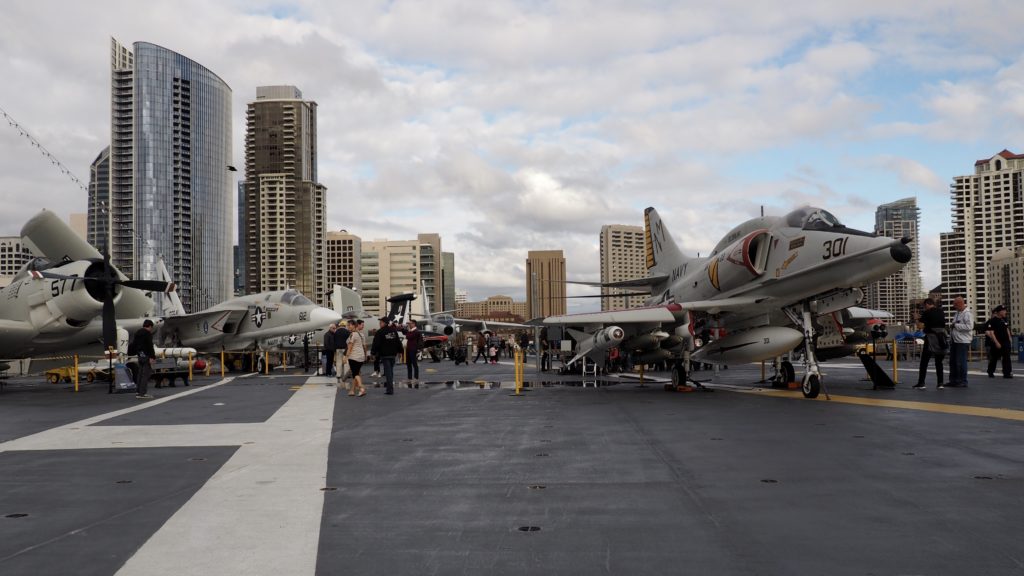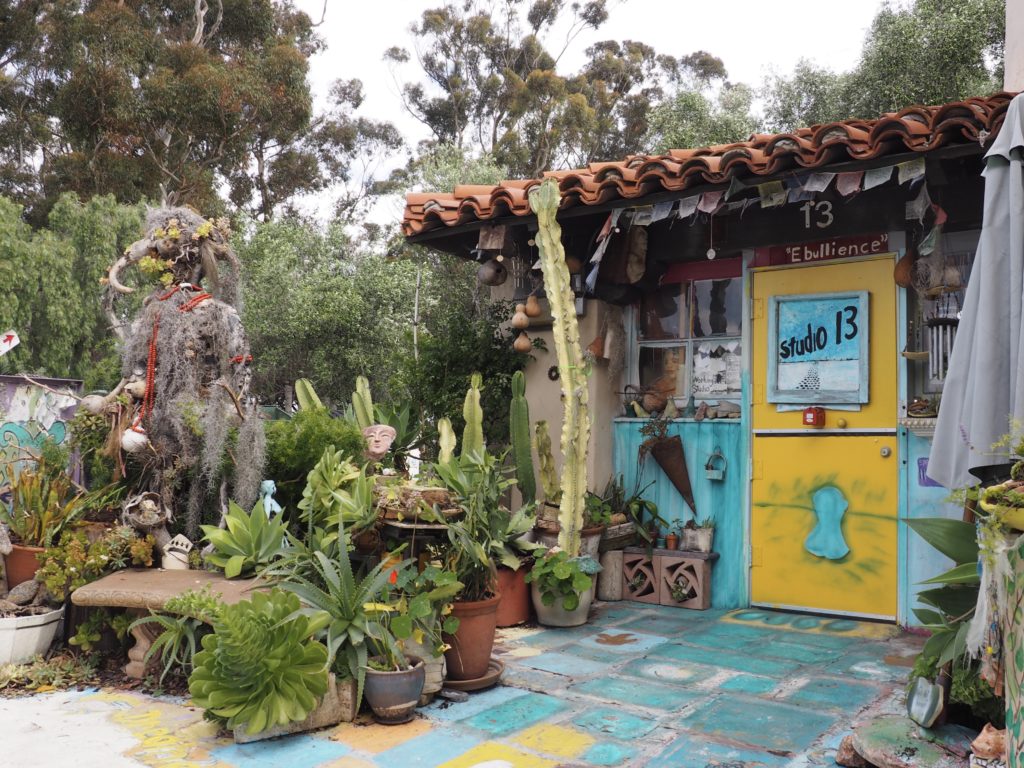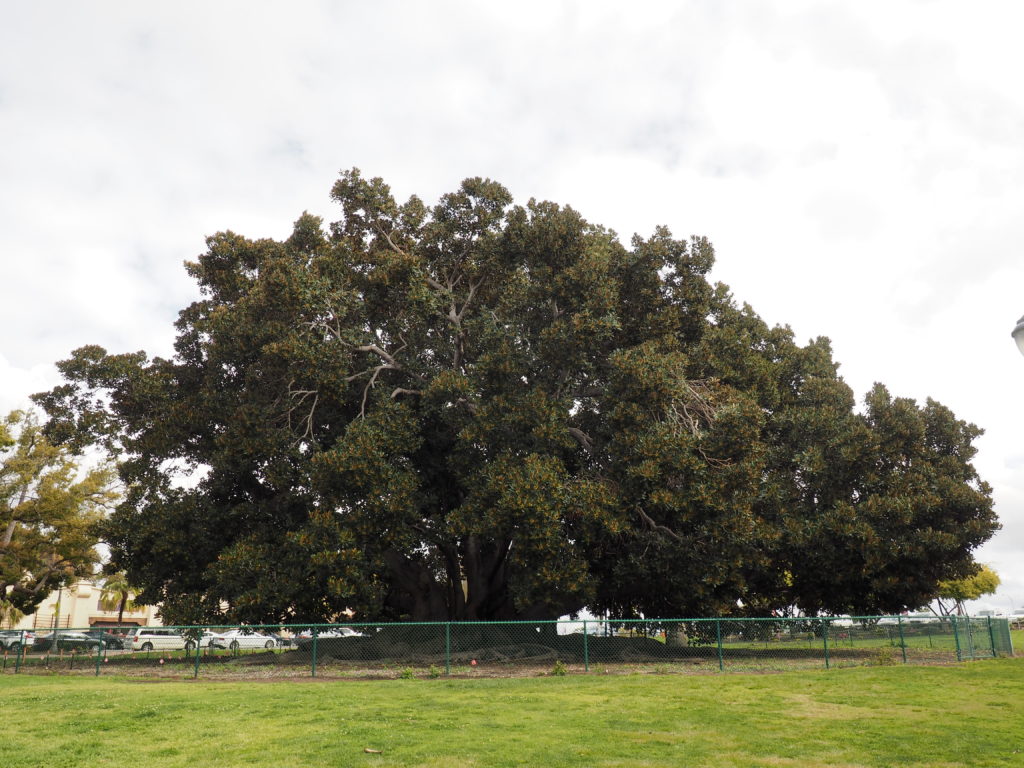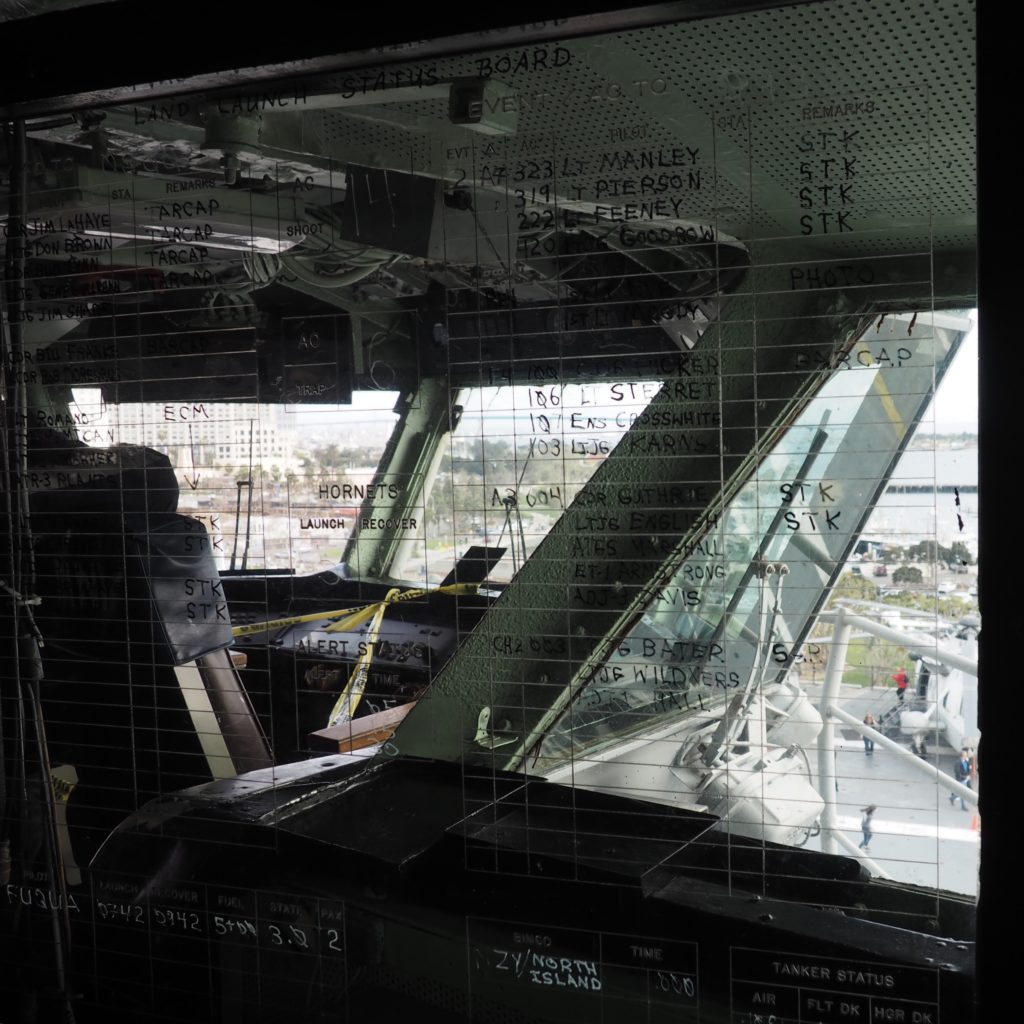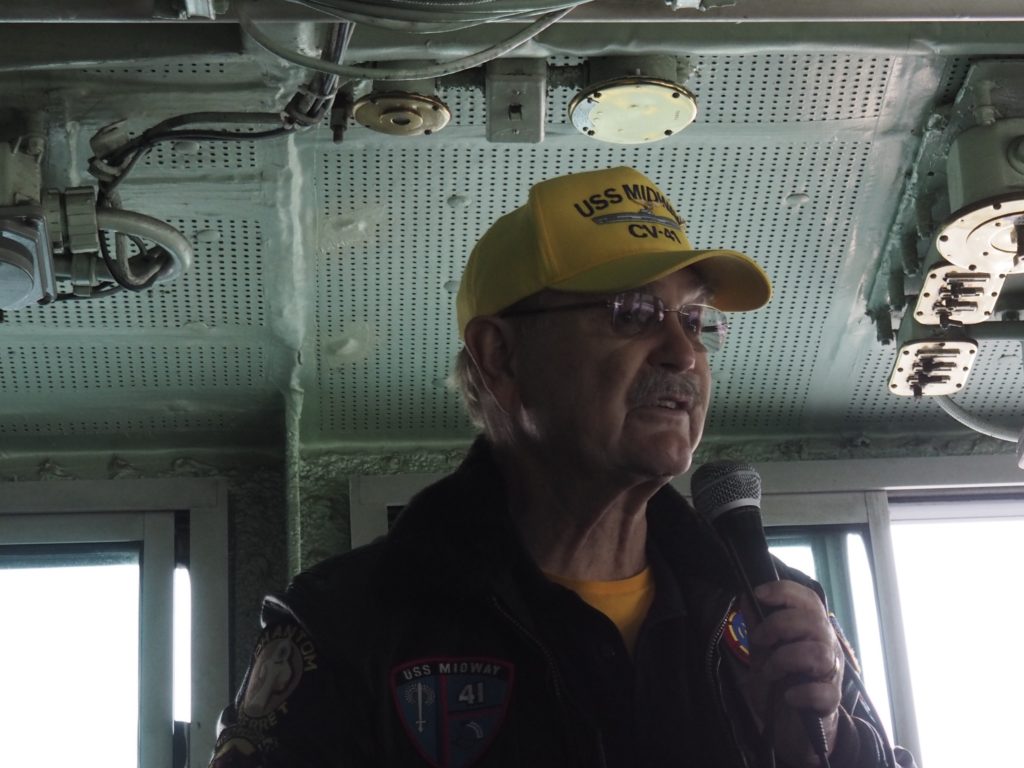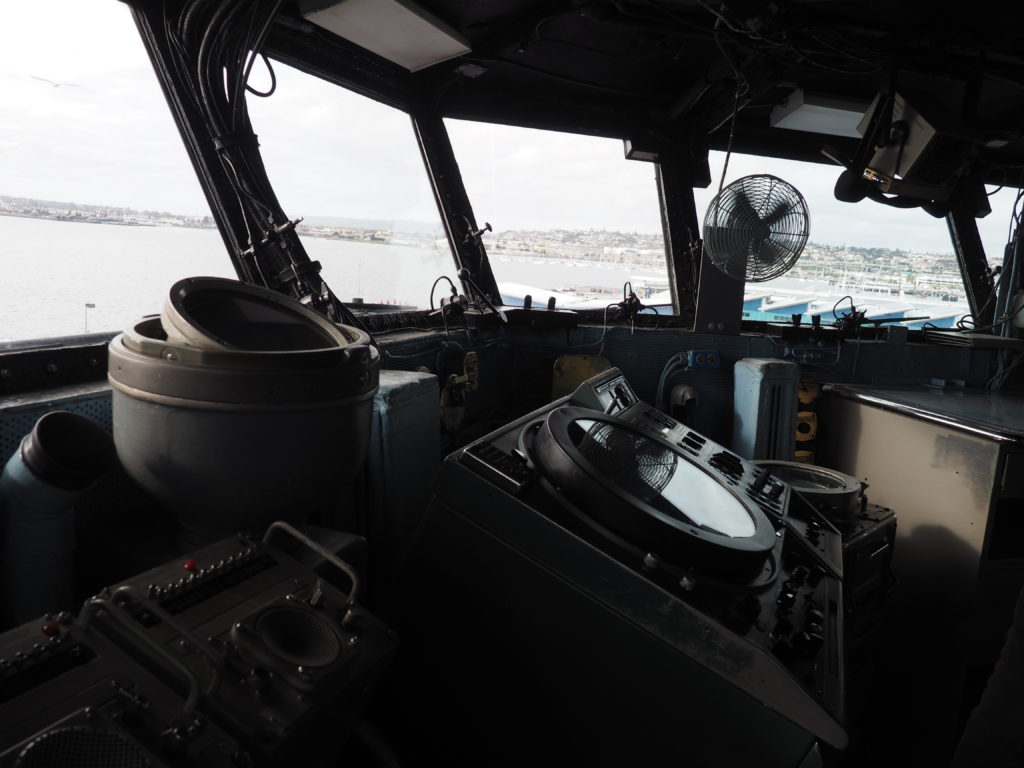Balboa Park
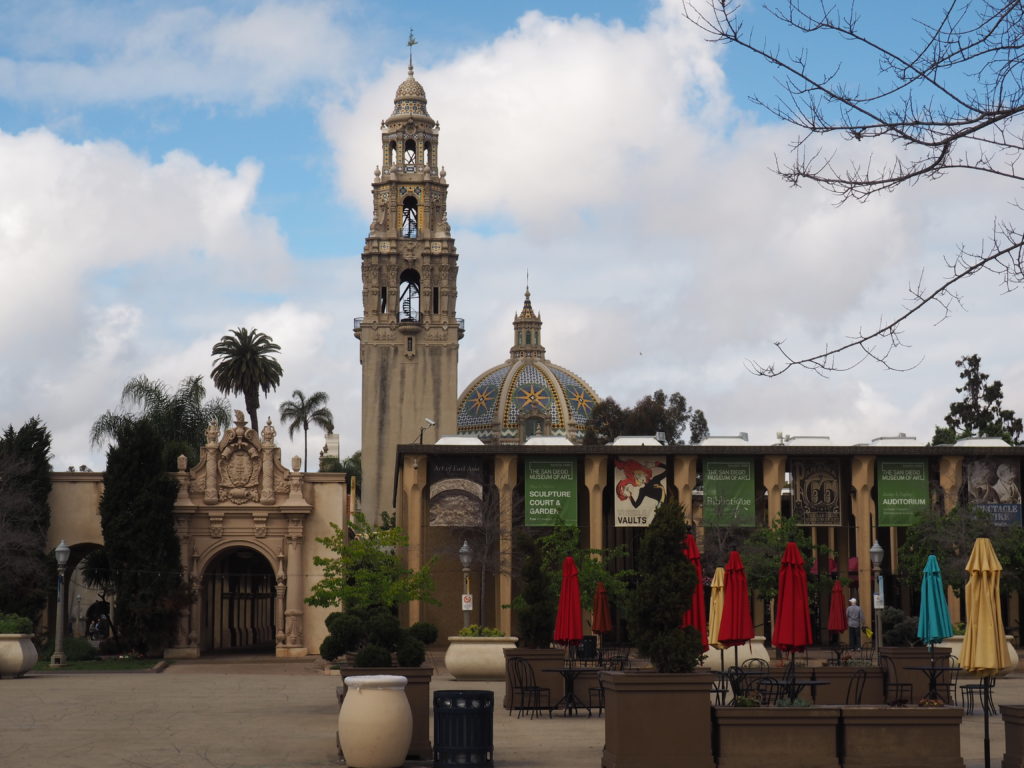
San Diego’s Balboa Park was created from the infrastructure built for two expositions, the Panama-California Exposition of 1915-16 and the California Pacific International Exposition of 1935-36 and includes over 15 museums, plus the zoo.
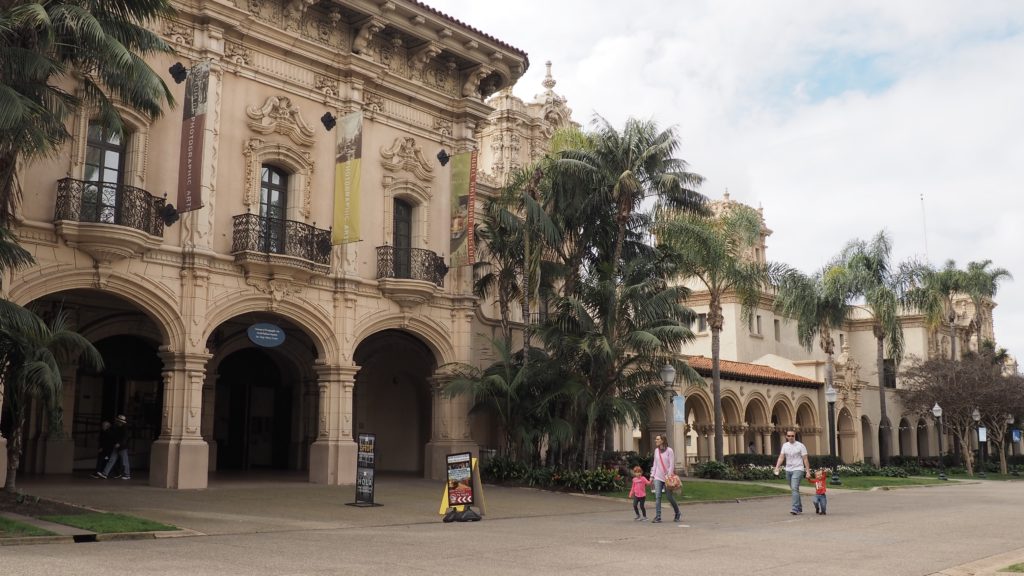
It’s a wonderful place for strolling, but must be packed during tourist season. The buildings are wonderful examples of Spanish style architecture.
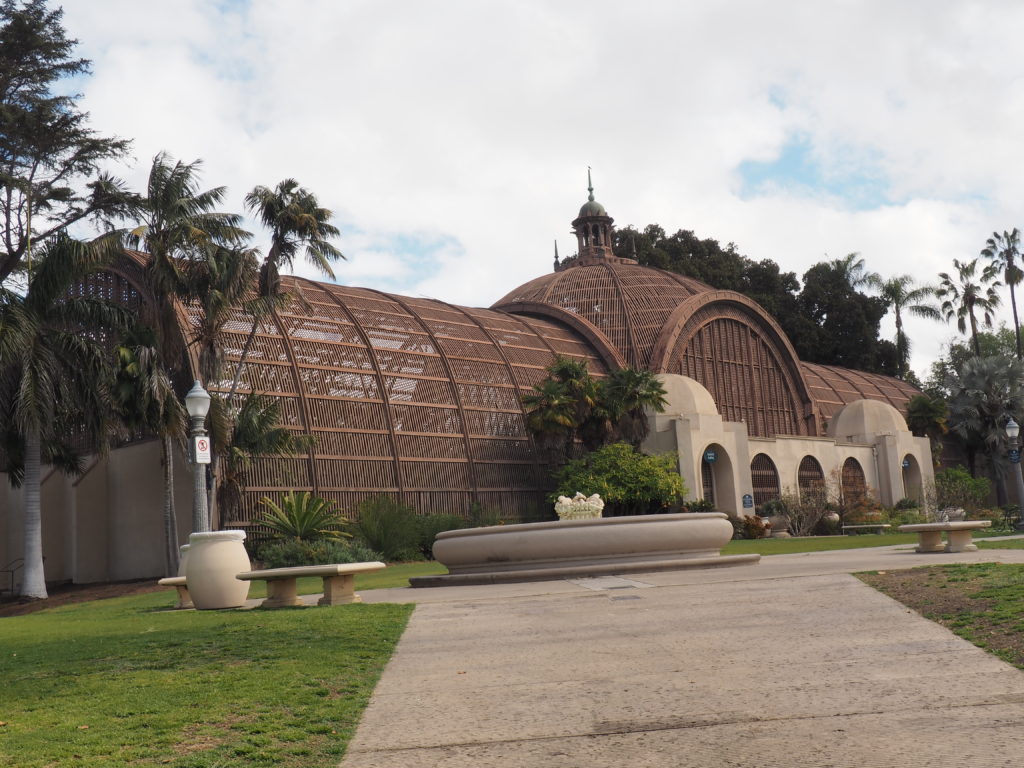
The Spanish Village Art Center is a funky complex with 37 working studios representing over 250 local artists. We chatted for quite a while with a silversmith who is obsessed with all the different weaves one might use for silver chains. She learned her craft from a Native American custodian at her public school in Wyoming when she refused to continue taking Home Ec.
This Moreton Bay Fig tree was planted sometime before the first of those expositions and its canopy is roughly 150’ across. For understandable reasons, they’ve put a fence around it to help it survive for another hundred years.
The Waterfront & the USS Midway
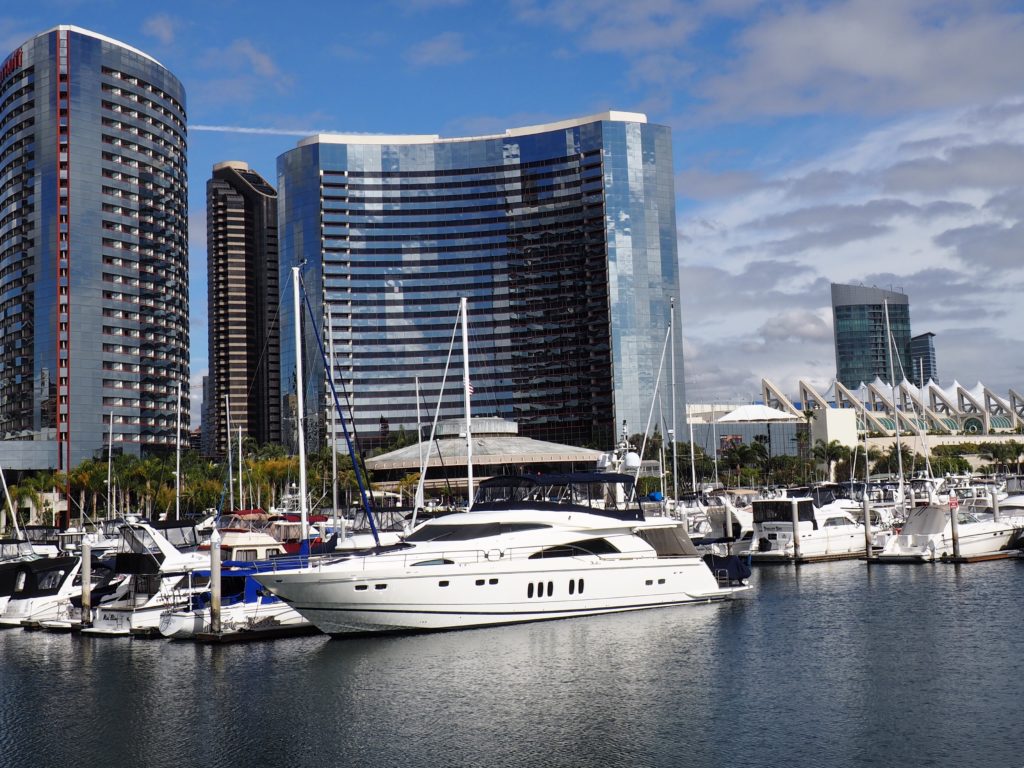
After wandering the Gaslight District and Downtown, we knew we had to make our way to the waterfront before leaving San Diego.
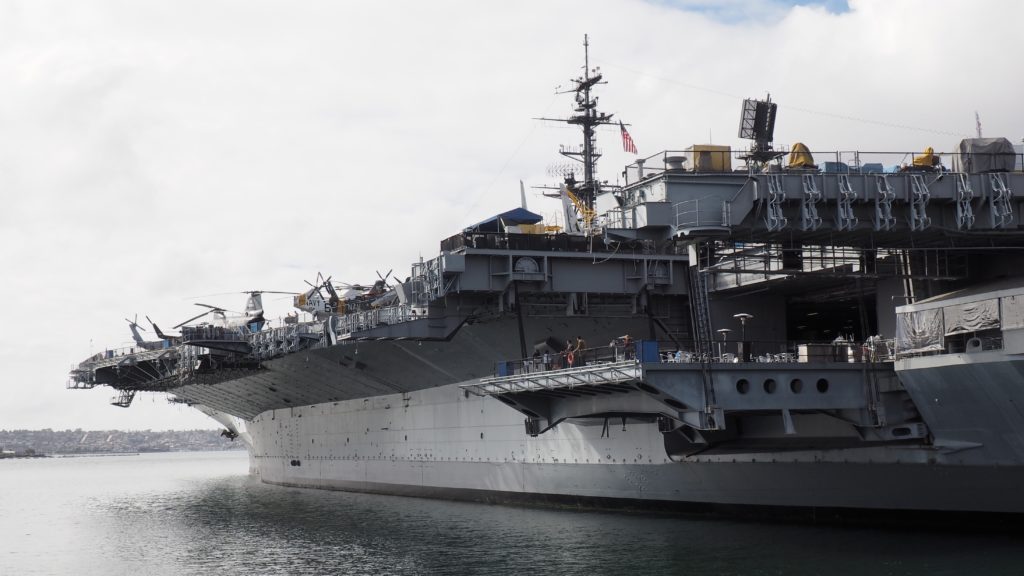
Commissioned one week after the end of WWII, the USS Midway was the largest ship in the world until 1955. It saw action in the Vietnam War and Desert Storm and was decommissioned in 1992. Its home port was Yokosuka, Japan, and was too large to go through the Panama Canal. In 2004 it was brought San Diego and became a privately run museum.

Power Generation Controls 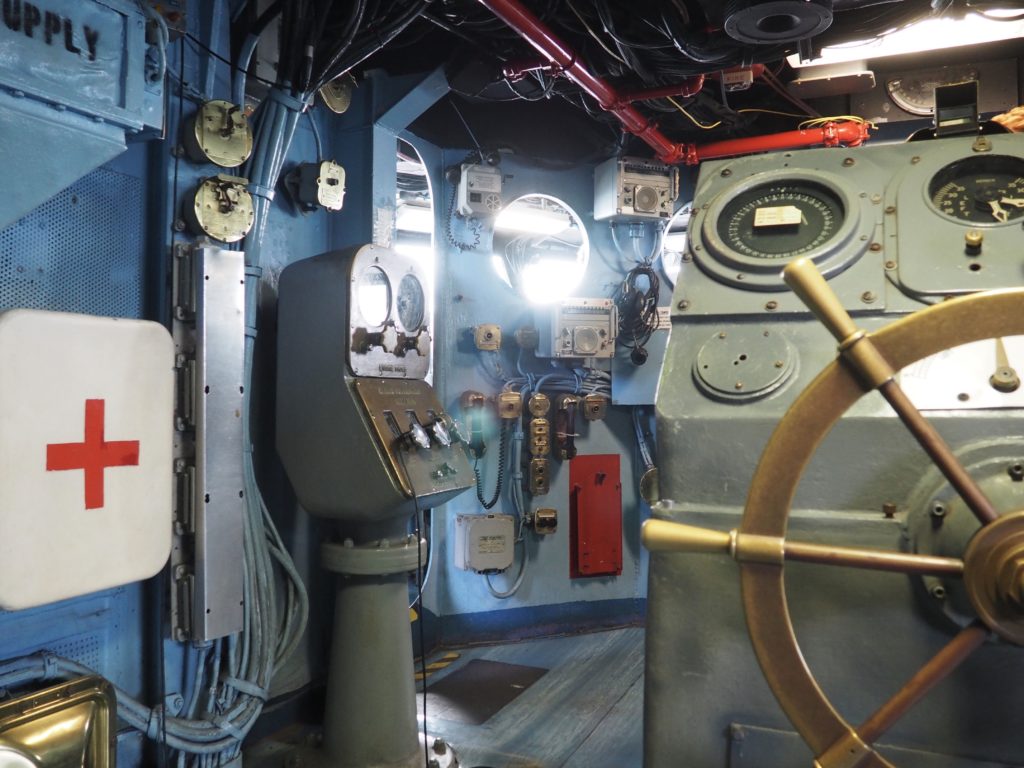
The Helm (steering wheel)
Fortunately, there were tours and helpful volunteers (all retired Navy) to explain how this thing worked. On the left are the steam engine room controls that determine the power going to the propellers, whether the power source is diesel (this ship) or nuclear. In the photo to the right, the controls left of center are the fine tuning for speed. Make no mistake. This thing could move. In fact, you could waterski behind it.
We took a tour of the Island, which is the structure on the flight deck with both the navigational controls and the operations center for takeoff and landing of the aircraft. On the left, you can see the Launch Status Board which was maintained with a marker on glass, writing backwards so that the officers in charge of flight operations would always have current information available to them.
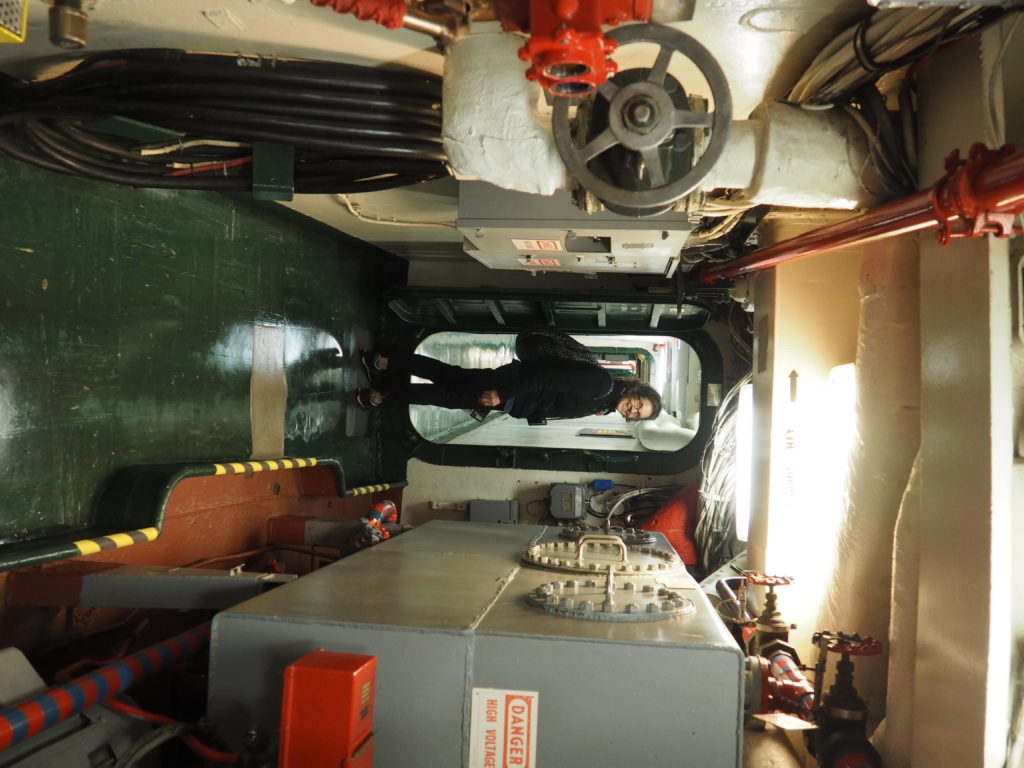
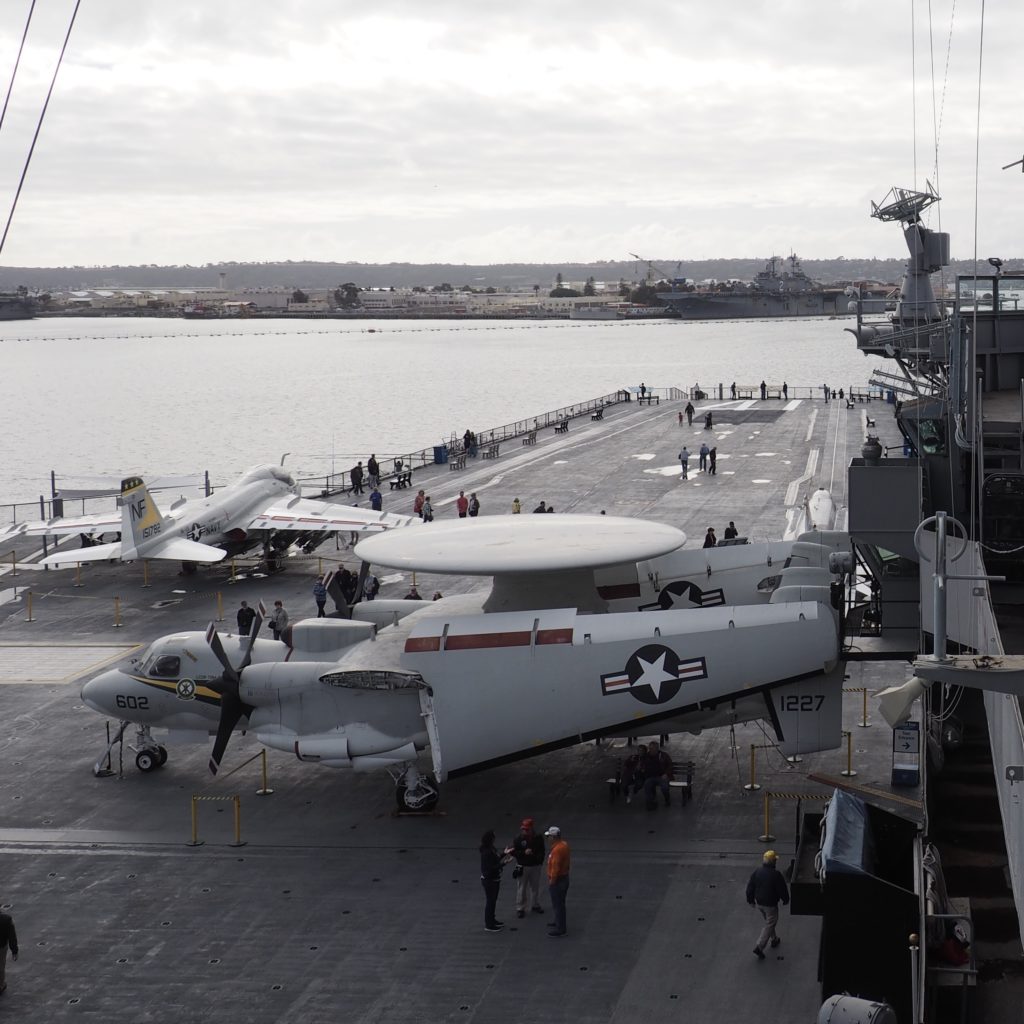
Plane at far left would be ready for launch with a catapult 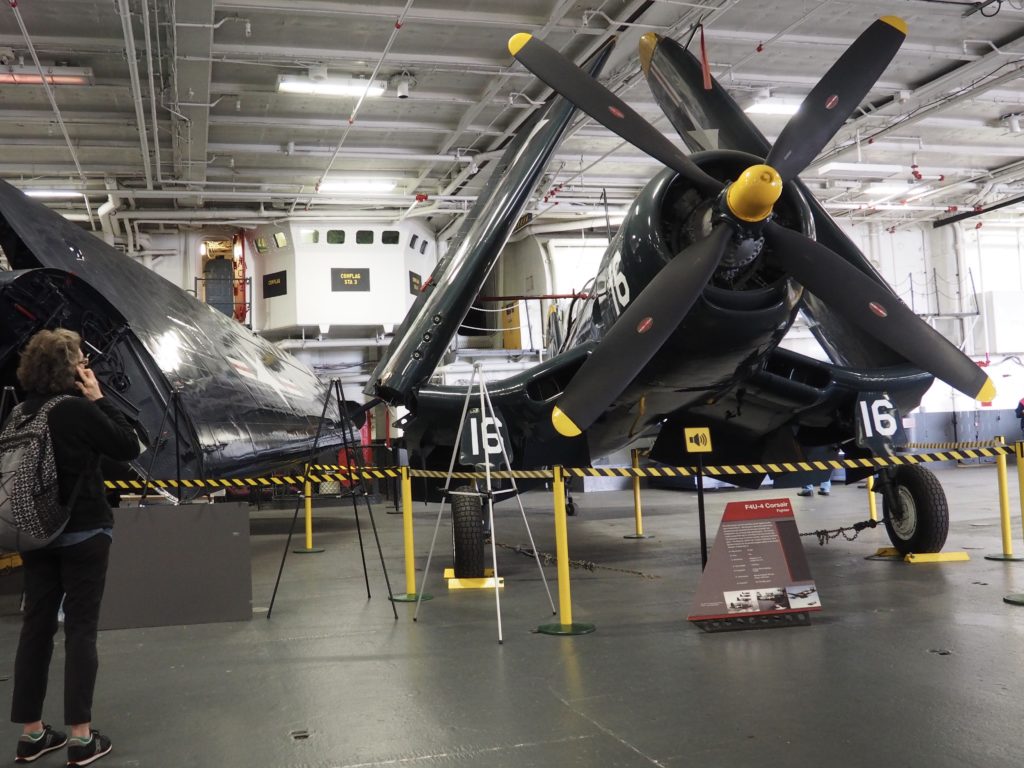
Corsair on Hanger Deck
At launch with the use of a catapult, the plane would go from zero mph to 170 mph in 3 seconds, or less. Planes were launched every 90 seconds. The Corsair fighter plane was a workhorse of WWII (would not have been on the Midway).
